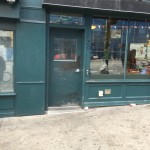 The sign on the door of the Insite supervised injection site was gone again. Russ wasn’t surprised. He said it happened all the time, so we continued our tour outside. We walked down a couple of blocks inhabited by the most dessicated, fragile, and helpless humans I’d ever seen except maybe in India. They looked like they were hanging on by a thread.
The sign on the door of the Insite supervised injection site was gone again. Russ wasn’t surprised. He said it happened all the time, so we continued our tour outside. We walked down a couple of blocks inhabited by the most dessicated, fragile, and helpless humans I’d ever seen except maybe in India. They looked like they were hanging on by a thread.
Addicts come to Vancouver from all over Canada. Some from the U.S. as well. Why? Because the weather is more tolerant than anywhere else in the country, and so is the city. Everyone knows they’re here. They live here. They’re left alone by the police and other agents of society. And they have the Portland Hotel Society to look after them.
The PHS runs Insite, but that isn’t their main contribution. Their larger project is to provide decent housing — at least marginally clean and well-run rooming houses — for the 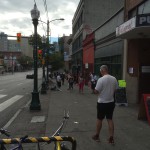 population of addicts that live here. Russ (Russ Maynard — see last post) ushered me into the lobby of a beautifully refurbished historical building, past the bearded, wizened security guy in the little booth — “Hey Russ, How’s it going?” — into an elevator with walnut walls and gleaming brass metalwork. He beamed as he told me how they’d acquired the building by promising to renovate it at half the cost demanded by standard developers. Yet behind the stately doors, past the supervisor’s station on each floor, lived people who’ve been addicted to heavy drugs for most of their lives. People whose lives depended not only on getting the drugs they needed but on treating current infections, avoiding new infections, escaping the violence that surrounded this place like an encampment of stormtroopers.
population of addicts that live here. Russ (Russ Maynard — see last post) ushered me into the lobby of a beautifully refurbished historical building, past the bearded, wizened security guy in the little booth — “Hey Russ, How’s it going?” — into an elevator with walnut walls and gleaming brass metalwork. He beamed as he told me how they’d acquired the building by promising to renovate it at half the cost demanded by standard developers. Yet behind the stately doors, past the supervisor’s station on each floor, lived people who’ve been addicted to heavy drugs for most of their lives. People whose lives depended not only on getting the drugs they needed but on treating current infections, avoiding new infections, escaping the violence that surrounded this place like an encampment of stormtroopers.
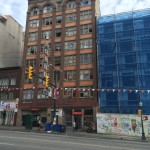 Most of the buildings weren’t nearly that nice. They were all converted single-room-occupancy hotels, left to rot when the lumber and mining industries scaled back and their population of seasonal workers slackened as well. But even the most run-down residence had this glow to it. I stood in the supervisor’s station (not sure what else to call it) in a building that looked ready to cave in. The stairs creaked and the walls were riven with cracks. Yet the workers were
Most of the buildings weren’t nearly that nice. They were all converted single-room-occupancy hotels, left to rot when the lumber and mining industries scaled back and their population of seasonal workers slackened as well. But even the most run-down residence had this glow to it. I stood in the supervisor’s station (not sure what else to call it) in a building that looked ready to cave in. The stairs creaked and the walls were riven with cracks. Yet the workers were 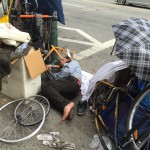 bright, cheery, competent young people bustling about their little office, attending to the petty and portentous problems of straggling residents, one trying to carry his bike upstairs, barely strong enough to carry his own spindly body all that way — “We’ll take care of it for you, Hal” — another who’d lost his keys again, a third whose sores were weeping uncontrollably. “Come into the infirmary, Mary. We’ll fix you up.” I turned away. She was a mess.
bright, cheery, competent young people bustling about their little office, attending to the petty and portentous problems of straggling residents, one trying to carry his bike upstairs, barely strong enough to carry his own spindly body all that way — “We’ll take care of it for you, Hal” — another who’d lost his keys again, a third whose sores were weeping uncontrollably. “Come into the infirmary, Mary. We’ll fix you up.” I turned away. She was a mess.
They’re not addiction counselors, said Russ. They’re not mental health workers. They’re a different breed. Young, idealistic kids, studded with tattoos and rings, doing this job because they cared. They had big hearts and good brains. They could do it. They wanted to do it.
And they understood what the PHS was about and what this community needed. It’s a civil rights issue, Russ told me. Not an addiction issue. In a nutshell, abstinence doesn’t work for a lot of people. Sure, we encourage people to detox, and we’ve got special residences for that. But we don’t expect them to stay clean. Rather, we’re providing them with a respite, a break from the 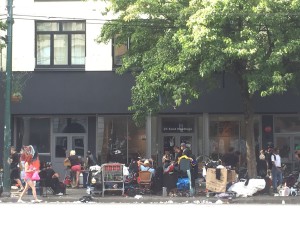 chaos of their lives, constantly needing to score, and sell themselves or do whatever they have to do to get dope. We don’t get mad or kick them out when they go back to it. We need to heal these people, not displace them.
chaos of their lives, constantly needing to score, and sell themselves or do whatever they have to do to get dope. We don’t get mad or kick them out when they go back to it. We need to heal these people, not displace them.
You have to understand where they come from, Russ explained. They grew up in foster homes. They’re cut off from mainstream society. They don’t know how to talk with normal people. They don’t know any normal people. They’re so used to being threatened, shamed, hunted, reviled. But we don’t shame them. Shame is so counter-productive. We’re killing people with shame.
So would you say they fit the “self-medication” model of addiction? I asked him. Sure, you could say that, he replied, not much caring what model I chose. But there’s a connection to be made with mainstream thinking in addiction. Some of these folks are the ones Gabor Mate wrote about in Hungry Ghosts. I now saw how the label fit.
This was the one stop on my book tour that took me completely out of myself, out of my clever arguments, my pride of accomplishment, my illusion that I understood addiction. My head was spinning. I had never seen people living so close to death, kept alive and cared for by such unstinting kindness. I’d never seen an institution with such a human heart.
But the one scene at the core of all this, the experience I’ll never forget, was being inside Insite. It’s the first and most famous supervised injection site in the world. Active for 13 years now, according to Russ. People came in off the street, signed in with their usual nickname or pseudonym, sat in a waiting room if there were no booths available, and were then invited into the injection room. There they gathered supplies at a counter, placing what they needed — sterile solution, a wrapped syringe, alcohol swabs, etc. — in a cardboard container, the way you would at a cut-rate cafeteria. Then one of the workers would place a hand on their shoulder and point them to a booth, a well-lit counter top, about a meter wide, with a single chair pulled up to it. The booths were arranged in a broad semicircle, with at least one staff member keeping an eye on things. Unobtrusively.
And then they’d do their thing.
I hadn’t seen anyone shoot up for decades. The sight of it fascinated and disgusted me. The spidery search for veins that still worked, the bruises and scars and sores they worked around, the needle penetrating flesh, the change you could see, feel, almost taste, in body and soul, as the drug took effect. And then they were allowed to just sit there for awhile, draped on their little chair, their eyes droopy or glassy, the tension drained out of their thin frames. They were allowed to indulge in this brief moment of peace or contentment, before it was time to move on, vacate the booth for the next customer. And they were ushered into another room, asked if they needed anything, if they needed any kind of medical care. Then they got a handshake or a pat on the back, and back outside they went, back into the street that was a jungle, an impoverished playground, and, to many, a home.
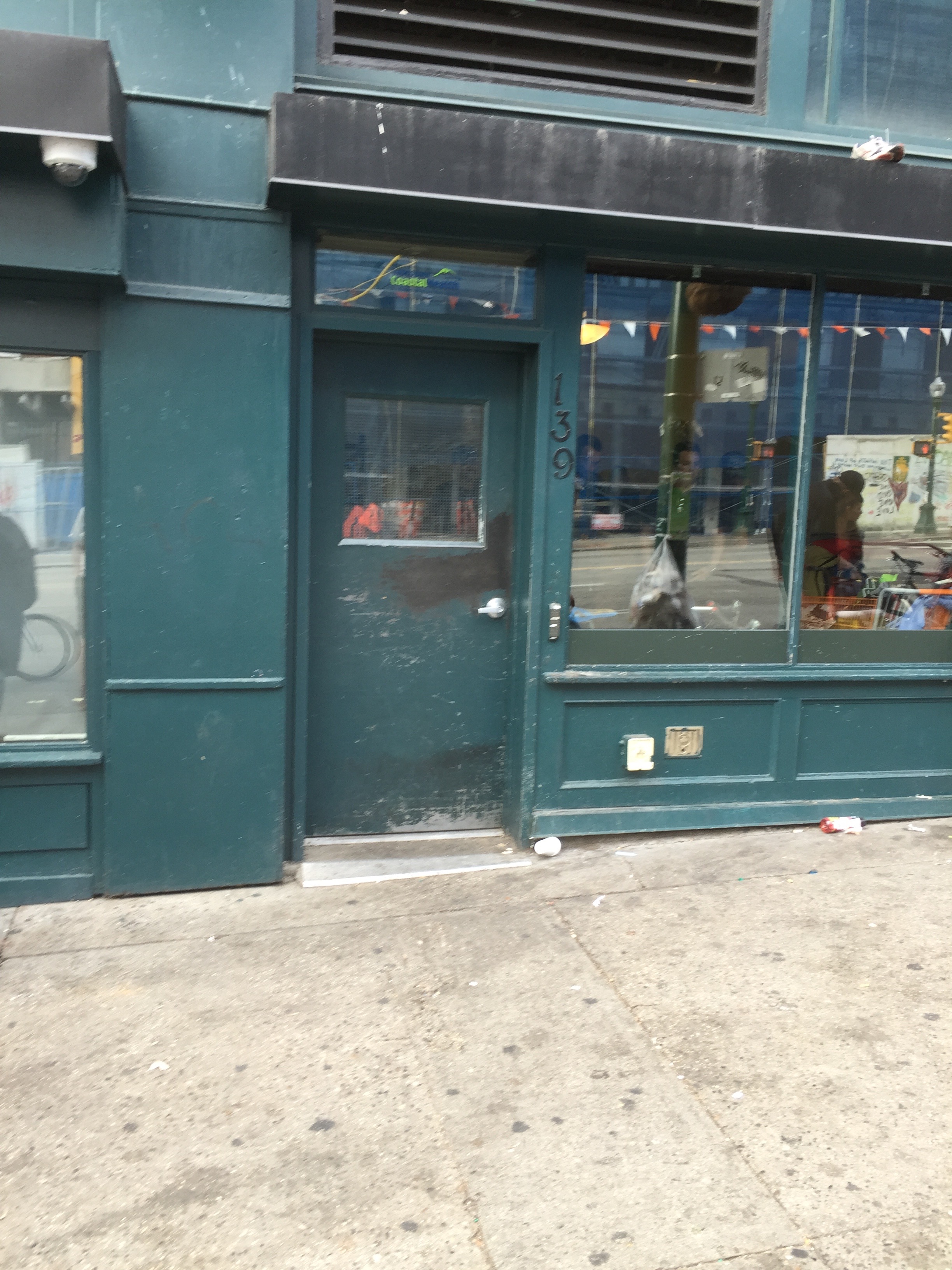
Leave a Reply to Ron Cancel reply